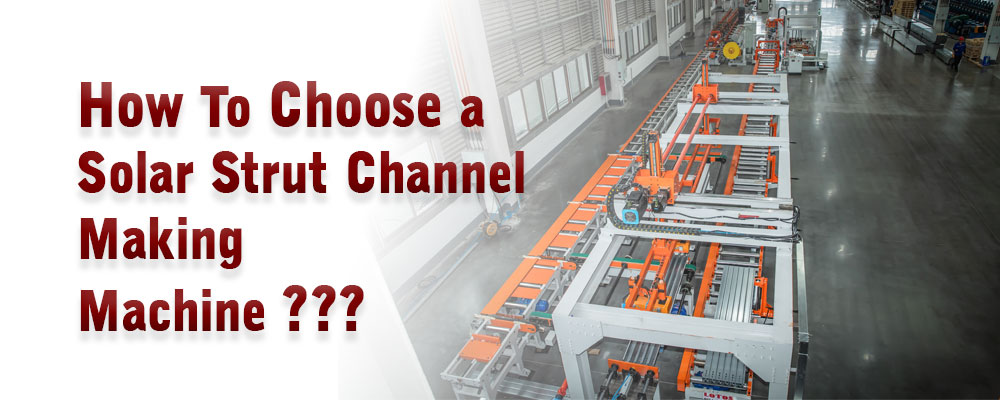Solar Strut Channel Roll Forming Machine
When investing in a solar strut channel roll forming machine, it’s essential to understand its role in producing high strength, precision-engineered components used in solar panel mounting systems. These machines transform flat steel or aluminum coils into consistent, durable strut channels that serve as the backbone of photovoltaic (PV) mounting structures. At Lotosforming, our advanced roll forming solutions are engineered to deliver uniform profiles with accurate dimensions, ensuring compatibility with international solar mounting standards. Choosing the right machine means prioritizing stability, automation level, material compatibility, and long-term operational efficiency.
Solar Panel Mounting Strut Channel
Selecting the right strut channel involves evaluating several technical and operational parameters. First, consider the material type and thickness typically galvanized steel or aluminum based on environmental conditions and structural requirements. Next, assess the channel profile dimensions, including width, height, and flange design, to ensure compatibility with mounting accessories and system load demands. At Lotosforming, we offer customizable roll forming lines that support a wide range of profiles, enabling manufacturers to meet diverse project specifications. Additionally, look for features such as pre-punched hole patterns, corrosion resistance, and tensile strength to ensure long term reliability in outdoor installations.
What is a Solar Strut Channel?
A solar strut channel is a cold-formed steel profile used to support and fix solar panels in both rooftop and ground-mounted systems. These channels typically come in sizes such as 41x41mm, 41x21mm, or customized forms, either slotted or unslotted, and are made from galvanized or stainless steel.
Their key advantages include:
- High strength-to-weight ratio.
- Versatile mounting options.
- Resistance to corrosion and weather.
- Easy installation and modular connection.
How to Choose the Right Solar Strut Channel Line?
Here are the most important factors you should evaluate when selecting a strut channel production line:
1. Profile Size and Material
- Common profiles include 41×21, 41×41, 27×18, and custom U-channels.
- Material thickness usually ranges between 5mm–2.5mm.
- The forming line should match your required sizes, tolerances, and coil type (e.g., galvanized steel, stainless steel, or aluminum).
Punching System
- Press Punching (Mechanical Press): Ideal for standard hole patterns, fast cycle times, and high-volume runs. Commonly used in traditional strut channel lines.
- Hydraulic Punching: Preferred for flexibility and variable hole configurations, often used in CU Solar Channel
LOTOSFORMING offers both systems based on your hole design and production speed.
Cutting System
- Stop-to-Cut (Manual or Servo controlled): More economical, good for moderate speeds.
- Flying Cut System: High speed, non stop cutting for maximizing throughput ideal for mass production lines.
Changeover Flexibility
Modern machines offer:
- Manual or automatic width/height adjustments.
- Quick tooling change systems for multiple profiles.
This flexibility reduces downtime and supports varied production demands.



